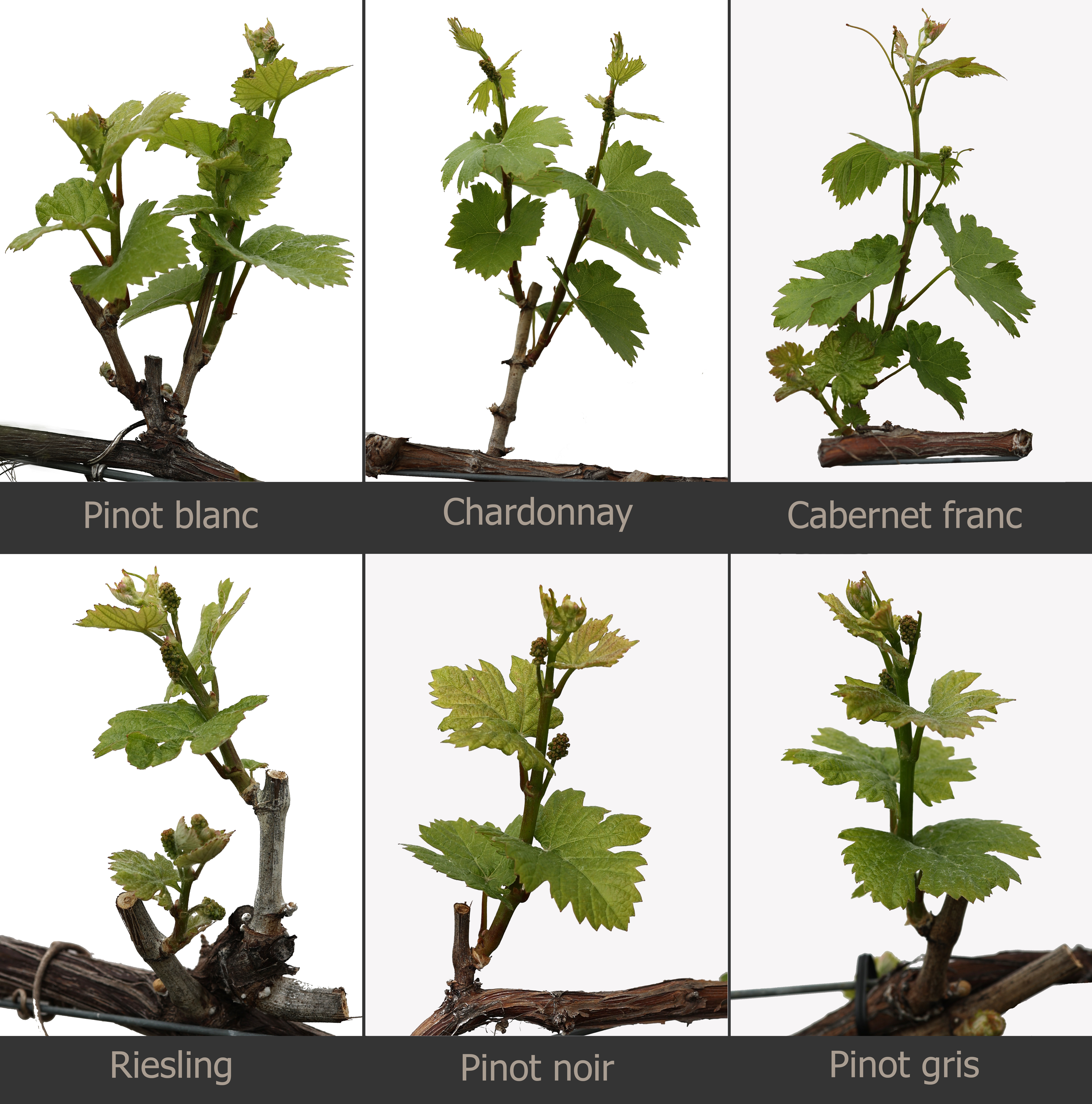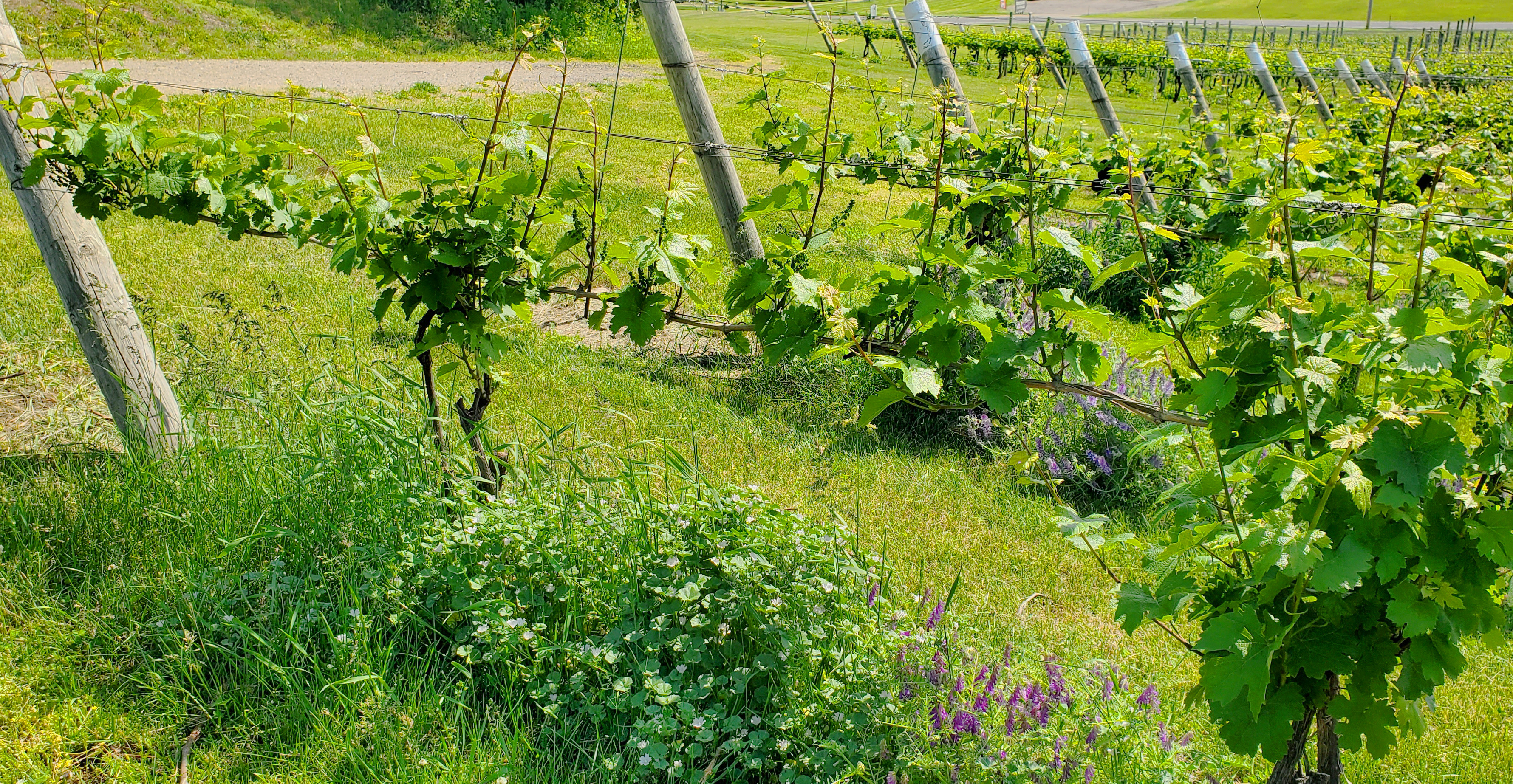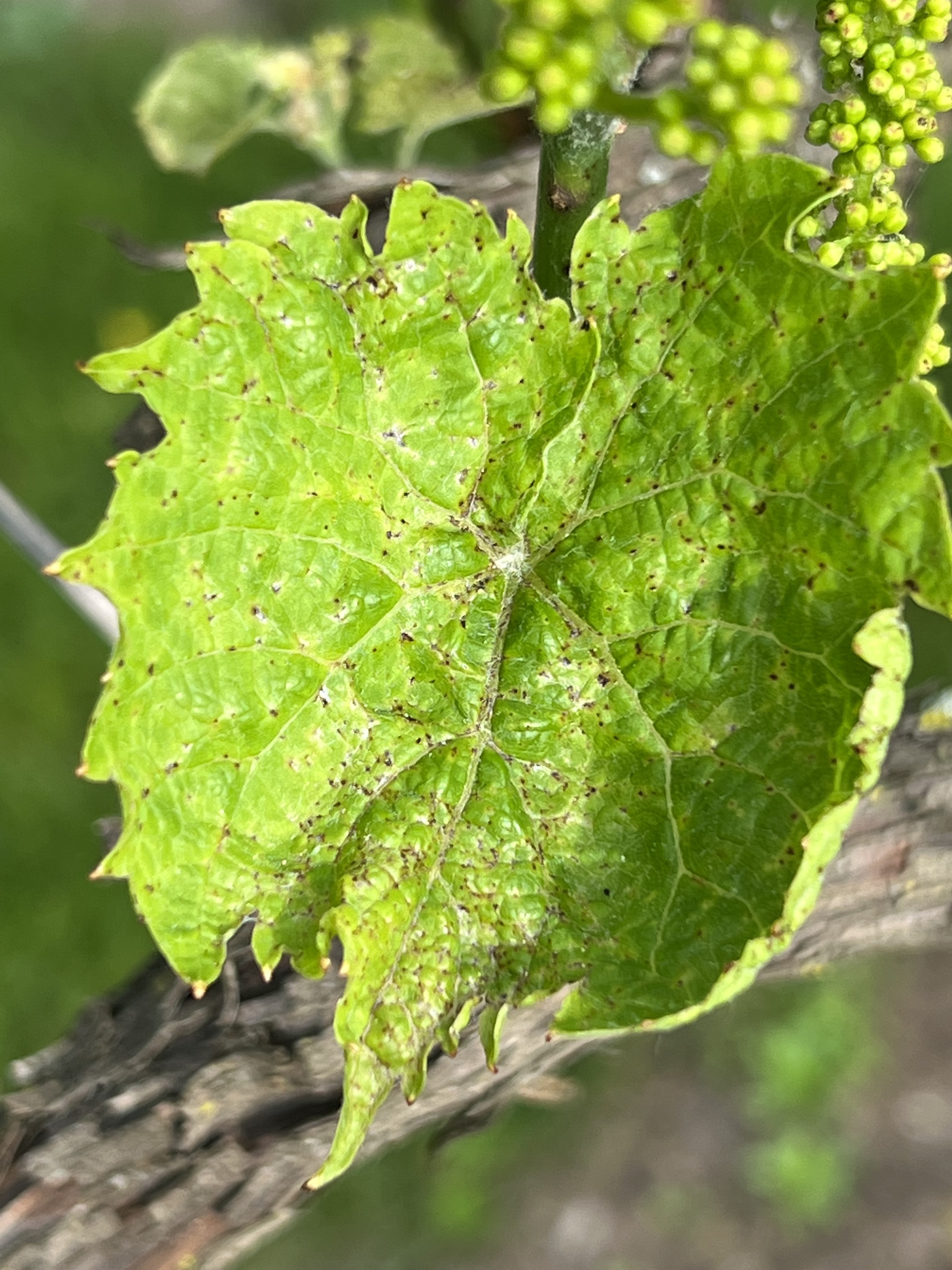Michigan grape scouting report – June 1, 2022
Grape bloom has begun in southwest Michigan.

Weather
Last week started mild. Southern Michigan saw high temperatures near 60 degrees Fahrenheit at the start of the week, slowly climbing into the upper 70s by the weekend. Northern Michigan saw a similar trend but climbing to the low 70s. A dome of heat entered the state over the weekend, bringing highs near 90 on Monday and Tuesday.
Scattered rain passed through the state on Wednesday and Thursday, bringing a quarter to half inch of rain for most areas. Another intense storm system slowly passed through the middle of the state on Friday morning, dropping up to 2 inches in some isolated locations. A storm front blew through the state last night bringing cooler air with it.
The next week will bring mild and consistent weather. Northern Michigan should see high temperatures in the mid 60s, lows around 50. Southern Michigan will have highs in the mid 70s. Sunday and Monday will see chances of rain, but at this time, there are no predictions for severe weather with the system.
With the warmer week, we picked up an average number of GDD than last week: 75-110 GDD base 50. The southwest region is 180 GDD base 50 ahead of the northwest region.
- Southwest Michigan GDD Summary from March 1 through May 30, 2022
- Southeast Michigan GDD Summary from March 1 through May 30, 2022
- Northwest Michigan GDD Summary from March 1 through May 30, 2022
|
Region |
Current GDD 50 F |
GDD 50 F last week |
Collected the past week |
|
Southwest Michigan |
480 |
369 |
111 |
|
Southeast Michigan |
431 |
325 |
106 |
|
Northwest Michigan |
300 |
225 |
75 |
Vine growth
In the southwest, juice grape varieties and many hybrids are at prebloom stage. Some hybrids such as Marquette, Geneva Red, and Brianna started blooming on Tuesday at the Southwest Michigan Research and Extension Center (Benton Harbor). Most vinifera are around 12-15 inches of growth at this time with clusters beginning to expand and separate.
In northern Michigan, growth continues with many varieties adding 2-4 inches of growth. Unfolded leaves and clusters can be seen in most of the cultivars.
See this chart for grape growth stages.

Horticulture
Shoot thinning should be underway in earlier varieties in the southern vineyards, with later varieties beginning soon. Northern vineyards should begin thinning soon as well. Shoot thinning is an important canopy management tool to improve air circulation, minimize disease pressure, reduce shading, improve spray penetration and ultimately improve fruit quality at harvest. Thin shoots when they are 5-12 inches long.
See this article on Early Season Vineyard Management for more information on shoot thinning.
Horticulture
Shoot thinning should be underway in many varieties in the southern vineyards. Northern vineyards should begin thinning soon as well. Shoot thinning is an important canopy management tool to improve air circulation, minimize disease pressure, reduce shading, improve spray penetration and ultimately improve fruit quality at harvest. Thin shoots when they are 5-12 inches long.
See this article on Early Season Vineyard Management for more information on shoot thinning.

Diseases
At this time of year, the disease focus is on phomopsis, black rot, anthracnose and powdery mildew. Contact fungicides like the EBDCs (FRAC M3) and captan are the prebloom products of choice. They function similar to dormant applications by sanitizing the vineyard before bloom.
Copper, sulfur and early season oils may also be utilized (especially if a grower is organic), which try to suffocate fungal spores and infected tissues or kill on contact. Be careful when using oil with certain products as it can increase the risk of phytotoxicity.
As bloom approaches in southwest Michigan, start choosing fungicides that control all the fruit diseases. For example with downy mildew we are most concerned with fruit infection at this time and sprays should be timed prior to bloom and at bloom for optimal control. For more information on fungicide options and the impacts of rain on disease spread, check out last week’s grape scouting report or this article on early season disease management.

Insects
High grape berry moth catch continues in southwest Michigan. These moths being caught are males. Females should be emerging as grapes begin to bloom.
Wild grape bloom has become widespread throughout southwest Michigan in the past week. Reports started coming in of bloom on Friday and continued through the weekend. Wild grape bloom at 50% is used as the biofix for grape berry moth models. The majority of the grape berry moth population is not in within commercial vineyards at this time of year. So any insecticide treatments will have no measurable impact on future generations. Typical treatment timings usually start with the next generation that will show up in 4-6 weeks.
For southern Michigan grape growers, be on the lookout for rose chafer and potato leafhopper. Both should be expected in vineyards soon. Rose chafers can be found feeding on leaves and clusters. Potato leafhoppers feed on the undersides of leaves. The leaves of some sensitive grape varieties can be yellowed and cupped in response to this leafhopper’s feeding. Most vines are very tolerant of their damage and control isn’t warranted. Potato leafhopper does not overwinter in Michigan. It is blown in on southerly winds and storm fronts in the spring.
Upcoming events
- Northwest Michigan Roundtable Discussion on Under-Vine Management Hybrid Meeting - Parallel 45 Vines & Wines and Michigan State University Extension invite grape growers from across Michigan and the Midwest to the Northwest Michigan Roundtable Discussion on Under-Vine Management on June 10 from 3-5 p.m. at Shady Lane Cellars.
- The Michigan Grape Society Summer Grower’s Social series continues on June 15 with an evening get together at Domaine Berrien. They will be discussing vineyard weed control, vineyard floor management, and how their practices help prevent winter damage. Registration is required to collect a head count for food.
- The Southwest Michigan Viticulture Field Day will return to the Southwest Michigan Research and Extension Center for 2022. As tradition holds, the event will be the last Wednesday of July (July 27, 2022) and will include presentations of ongoing research in southwest Michigan. The event will once again conclude with a steak dinner and local wine tasting. Registration information to come soon.
- Register for Dirt to Glass 2022: Elevating Michigan Wine from the Ground Up. Michigan State University Extension is hosting a new conference for the Michigan grape and wine industry. Dirt to Glass 2022: Elevating Michigan Wine from the Ground Up is the first ever of its kind in Michigan and this year it will take place in Traverse City on August 25-26. This year's Dirt to Glass conference will focus on soil health, soil identification and soil fertility. Each year, the conference chooses a specific area of study based on the results of an annual educational needs assessment survey. Registration by July 10 is required.
Related articles:
- 2022 Fruit insecticide registration update
- Southwest Michigan fruit update – May 31, 2022
- Michigan grape scouting report – May 25, 2022
- 2022 MSU Fruit Pest Management Guide (E-154)
- Grape growth stages
- Early season vineyard disease management
- Early season vineyard management
This work is supported by the Crop Protection and Pest Management Program [grant no 2021-70006-35450] from the USDA National Institute of Food and Agriculture.



 Print
Print Email
Email
